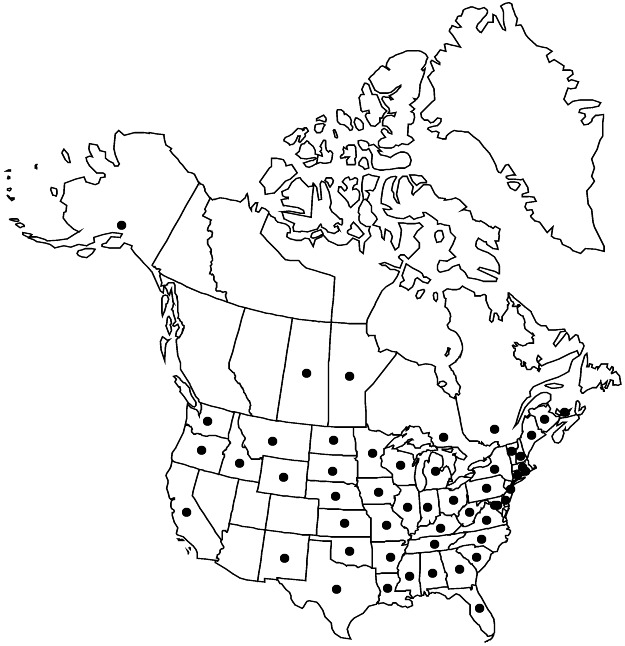Agrostemma githago
Sp. Pl. 1: 435. 1753.
Distribution

Man., N.B., Ont., P.E.I., Que., Sask., Ala., Alaska, Ark., Calif., Conn., D.C., Del., Fla., Ga., Idaho, Ill., Ind., Iowa, Kans., Ky., La., Maine, Mass., Md., Mich., Minn., Miss., Mo., Mont., N.C., N.Dak., N.H., N.J., N.Mex., N.Y., Nebr., Ohio, Okla., Oreg., Pa., R.I., S.C., S.Dak., Tenn., Tex., Va., Vt., W.Va., Wash., Wis., Wyo., Eurasia, introduced in South America, s Africa, Pacific Islands (New Zealand), Australia.
Discussion
Varieties 3 (1 in the flora).
Formerly a common weed of grain fields, Agrostemma githago is becoming increasingly scarce, both in North America and in its native environs in Europe (R. Svensson and M. Wigren 1986). Mechanical screening of grain, which removes contaminants, and modern herbicides have more or less eliminated the plant from grain fields in the flora. The saponin-containing seeds, occurring as contaminants in grain, are poisonous to livestock, birds, and humans. This species is sometimes cultivated in flower gardens.
Selected References
None.